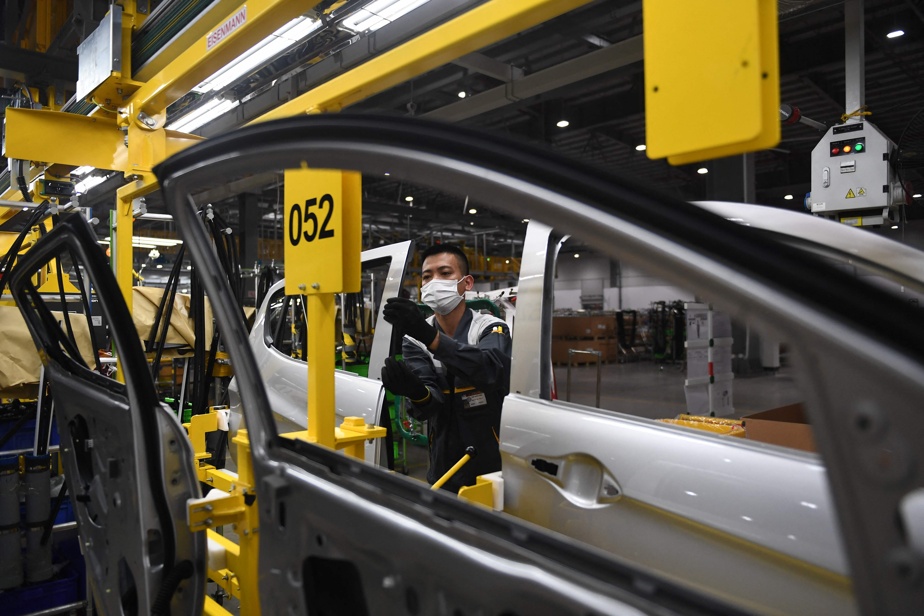If you order an electric vehicle today, it will probably be delivered to you next year. The rule of course has some exceptions depending on the brand. Manufacturers are reduced, like their distributors, to counting on the patience of their customers.
Posted at 11:45 a.m.
Faced with these delays, some consumers are falling back on a petrol model or are seriously thinking – this is the most ecological solution – of keeping their current frame.
Some pressure groups are calling on the Canadian and Quebec governments to take more coercive measures against the automobile industry so that it “turns on the tap”. A threat carried out, not without success, by other legislations.
Since 2020, Europe has imposed on the entire fleet sold of each brand the obligation to reject a maximum of 95 g of CO2 per kilometer (the equivalent of 4 L per 100 km). And this ceiling is decreasing year after year. Failing to comply, the manufacturer must pay a fine or obtain credits from competitors who exceed this standard.
Quebec, with its some 400,000 new vehicles per year, does not have the necessary levers to brandish such a serious threat. No more than Canada, for that matter. The electric vehicle is struggling to arouse the desire outside of Quebec and British Columbia (see the table), despite the subsidies offered. Therefore, it is not surprising that some manufacturers favor markets where it hurts the most.
2021 Clean Vehicle (ZEV*) Registrations in Canada
- Alberta: 1.8%
- British Columbia: 13%
- Prince Edward Island 2.9%
- Manitoba: 1.4%
- Nova Scotia: 1.6%
- New Brunswick: 1.4%
- Nunavik: 0%
- Ontario: 3.3%
- Quebec: 9.5%
- Saskatchewan: 1.2%
- Newfoundland and Labrador: 0.6%
- Northwest Territories: 0.7%
- Yukon: 4.5%
Source: IHS Markit
* The acronym ZEV (Zero Emission Vehicle) includes hybrid, plug-in hybrid, electric and hydrogen vehicles.
This is not the only pitfall that is hampering the availability of electric vehicles. The energy transition is undoubtedly the most important industrial challenge ever seen by the automotive sector and is much more complex to solve than it seems.
Beyond the design of an electric vehicle, the industry must also take into account several other factors, including that of employment. The manufacture and assembly of an electric motor require manpower two to three times less than those needed to manufacture a heat engine. Several equipment manufacturers and unions have been sounding the alarm for quite some time now: a “full-throttle” transition to all-electric will lead to hundreds of thousands of layoffs around the world.

PHOTO NHAC NGUYEN, AGENCE FRANCE-PRESSE
Electric vehicles cost consumers more.
The big manufacturers are also worried about it, as are consumers’ ability to pay, said Carlos Tavares, CEO of the Stellantis group, during the Reuters Next summit last fall.
Electrification adds 50% cost to a conventional vehicle. It is impossible for us to pass on 50% of additional costs to the final consumer, because most of the middle class will not be able to pay.
Carlos Tavares, CEO of Stellantis Group
A time for reflection
However, this waiting time represents a perfect opportunity to reflect on one’s own mobility. Obviously, this analysis differs greatly depending on whether one lives in a large center or in a remote region. Whether or not you have access to a charging station. Whether or not there is a reliable, safe and flexible public transport network.
Never mind, no matter how far you have to travel, there are more ecological alternatives to driving. Walking, cycling, carpooling, car sharing, short-term rental: every gesture, no matter how small, counts!

